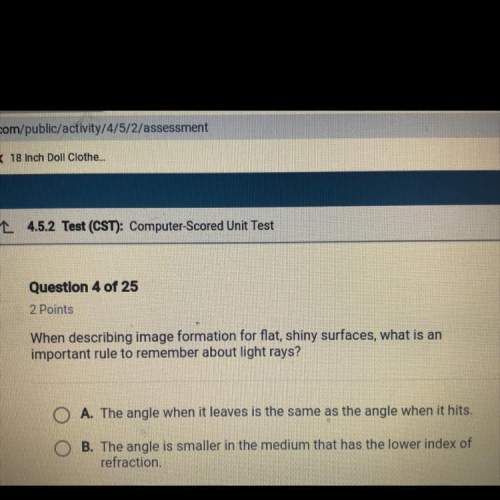
Physics, 12.02.2021 16:10, neparidzetazo
A polycondensation reaction takes place between 1.2 moles of a dicarboxylic acid, 0.4 moles of glycerol (a triol) and 0.6 moles of ethylene glycol (a diol). A. Calculate the critical extents of reaction for gelation using (i) the statistical theory of Flory and (ii) the Carothers theory. B.Comment on the observation that the measured value of the critical extent of reaction is 0.866.

Answers: 1
Other questions on the subject: Physics

Physics, 21.06.2019 18:30, Rusven
An experiment is designed to test the relationship between the initial height of a basketball before it is dropped to the height of its rebound bounce. the height of the rebound bounce is measured using a scale positioned behind the ball. in the above experiment, which condition would not be controlled? a). the starting height of the ballb). the surface the ball bounces on c). the type of ball d). the method to measure the rebound height of the ball
Answers: 1

Physics, 22.06.2019 09:30, officialariana01
In a heat engine if 1000 j of heat enters the system the piston does 500 j of work, what is the final internal energy of the system if the initial energy was 2000 j? 1. write the equation 2.list out your known variables 3.plug the numbers into the equations 4.solve 5.write your solution statement that includes initial energy and final
Answers: 3

Physics, 22.06.2019 12:00, drivinghydra
Aboat radioed a distress call to a coast guard station. at the time of the call, a vector a from the station to the boat had a magnitude of 45.0 km and was directed 15.0° east of north. a vector from the station to the point where the boat was later found is = 30.0 km, 15.0° north of east. what are the components of the vector from the point where the distress call was made to point where the boat was found? in other words, what are the components of vector c = b - a?
Answers: 3

Physics, 22.06.2019 19:30, rprest00
Amass m = 74 kg slides on a frictionless track that has a drop, followed by a loop-the-loop with radius r = 18.4 m and finally a flat straight section at the same height as the center of the loop (18.4 m off the ground). since the mass would not make it around the loop if released from the height of the top of the loop (do you know why? ) it must be released above the top of the loop-the-loop height. (assume the mass never leaves the smooth track at any point on its path.) 1. what is the minimum speed the block must have at the top of the loop to make it around the loop-the-loop without leaving the track? 2. what height above the ground must the mass begin to make it around the loop-the-loop? 3. if the mass has just enough speed to make it around the loop without leaving the track, what will its speed be at the bottom of the loop? 4. if the mass has just enough speed to make it around the loop without leaving the track, what is its speed at the final flat level (18.4 m off the ground)? 5. now a spring with spring constant k = 15600 n/m is used on the final flat surface to stop the mass. how far does the spring compress?
Answers: 3
Do you know the correct answer?
A polycondensation reaction takes place between 1.2 moles of a dicarboxylic acid, 0.4 moles of glyce...
Questions in other subjects:

Biology, 25.08.2019 03:10


Social Studies, 25.08.2019 03:10

Social Studies, 25.08.2019 03:10

Mathematics, 25.08.2019 03:10

Mathematics, 25.08.2019 03:10



Computers and Technology, 25.08.2019 03:10








